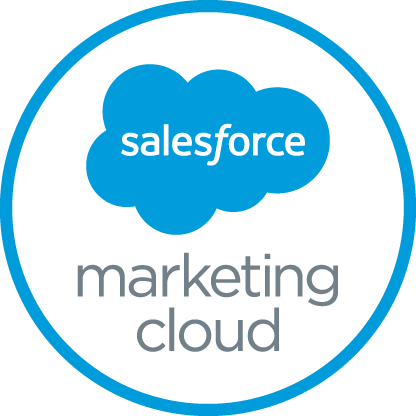Master AI Optimization: From Basic AIO Setup to Advanced Business Results
Understanding Artificial Intelligence Optimization (AIO)
What is AIO and how it differ from traditional SEO
AIO fundamentally transforms how content is optimized for discovery. While traditional SEO prioritizes interactivity through keywords and backlinks to raise a site’s ranking, AIO focuses on content generation and understanding context. This shift enables businesses to adapt quickly to changing market conditions. Furthermore, AIO uses specialized AI agents to analyze user interactions across multiple platforms, creating truly customized content experiences.
The difference becomes clearer when examining their focus areas:
- Traditional SEO: Optimizes for keyword-based algorithms and values backlinks as authority signals.
- AIO: Optimizes for language understanding and prioritizes semantic structure and information clarity.
Core technologies: NLP, machine learning, and predictive analytics
Natural Language Processing (NLP)
Machine Learning
analyzes vast datasets to identify patterns and trends, providing valuable insights into audience behavior and content performance. These algorithms allow AI systems to learn from data and improve their performance over time, making predictions without explicit programming.
Predictive Analytics
Why AIO matters in modern digital marketing
AIO is rapidly becoming essential for businesses wanting to maintain visibility as user behavior shifts. Essentially, AIO can analyze user behavior, search intent, and demographic data to create highly relevant content for target audiences. This improved relevance enhances engagement, click-through rates, and conversions.
Setting Up a Basic AIO Framework
Establishing a solid technical foundation is crucial for effective AI optimization. After understanding AIO concepts, proper implementation helps AI systems better access and interpret your digital content. Let’s explore the essential components needed to set up a basic AIO framework.
Allowing LLM crawling via robots.txt and CDN settings.
Creating XML sitemaps for AI discoverability
XML sitemaps function as a blueprint of your site, listing important pages and providing additional information about each page, such as when it was last updated. This file, written in Extensible Markup Language, is particularly valuable for AI crawlers seeking to understand your site structure.
Some key limitations to remember:
- Sitemaps must not exceed 50,000 URLs
- File size is limited to 50MB uncompressed
For websites exceeding these limitations, you’ll need to create a sitemap index file. Generally, it’s best to follow standard conventions for sitemap locations (/sitemap.xml) and reference them in your robots.txt file: Sitemap: http://www.example.com/sitemap.xml.
Avoiding client-side rendering for critical content
Client-side rendering (CSR) poses significant challenges for AI crawlers. The main drawback is longer initial loading time, which can negatively impact SEO since crawlers might not wait for content to load before exiting. This two-phase approach increases the possibility of AI systems seeing empty content by missing JavaScript-rendered elements.
For optimal AI optimization, consider these alternatives:
- Use server-side rendering for critical content.
- Implement hybrid rendering approaches.
- Avoid blocking JavaScript resources through robots.txt
- Prevent render blocking for essential content
Mobile platforms automatically disable client-side rendering to save power consumption, consequently affecting how AI systems interpret your content. By understanding these technical foundations, you’ll create an environment where AI systems can effectively crawl, understand, and optimize your digital content.
AI Optimization Tools and Techniques for Marketers
Effective AI optimization requires marketers to understand technical aspects alongside practical tools that deliver results. Mastering these elements can transform your marketing efforts through enhanced performance and efficiency.
Hyperparameter tuning: Grid Search vs Bayesian Optimization
Feature selection and regularization in AI models
Feature selection improves AI models by identifying the most relevant data attributes. This process streamlines models through three primary methods:
- Filter methods: Assess variables independently against target variables
- Wrapper methods: Train algorithms with various feature subsets
- Embedded methods: Integrate feature selection into the model training process
Meanwhile, regularization reduces model complexity by penalizing flexibility of parameters. Techniques like LASSO (L1), Ridge (L2), and Elastic Net regularization prevent overfitting through different mathematical approaches. These methods ensure AI models remain generalizable across marketing applications.
Top AIO tools: Jasper, Surfer SEO, Frase, MarketMuse
Using IndexNow and Bing APIs for proactive indexation
Driving Business Results with AIO in Marketing
Personalized content delivery using AI agents
AI-based email and social media campaign optimization
AI transforms email marketing by analyzing historical customer engagement patterns to identify optimal send times for individual recipients. Through this approach, marketers report a 10x improvement in A/B testing effectiveness using generative AI. Beyond timing optimization, AI enables precise audience segmentation based on behavioral patterns rather than just demographics. Hence, personalized emails show 26% higher open rates and 14% increase in click-through rates.
Case study: 40% increase in ad performance using AIO
A midsize fashion brand implemented AI-driven marketing solutions with remarkable results:
- 40% increase in sales revenue through AI-powered personalization
- 300% higher ad engagement rates with AI-selected creative content
- 28% reduction in customer acquisition costs through smarter audience targeting
These improvements resulted from dynamic ad adjustments and AI-based targeting of high-intent buyers instead of broad audiences.
Tracking AI traffic using regex in Google Analytics
As AI platforms increasingly drive website traffic, tracking this new source becomes critical. In GA4, capturing AI referrals requires creating a custom segment using regex patterns that identify major AI platforms:.*chatgpt.com.*|.*perplexity.*|.*openai.com.*|.*gemini.google.com.*|.*claude.ai.*. This tracking reveals growing trends in AI-sourced visits and conversions. First, implement this through GA4 explorations, then create a dedicated AI channel group for ongoing reporting.
Conclusion
FAQs
AIO combines AI technologies with traditional SEO practices to improve content creation and discovery processes. Unlike traditional SEO, which focuses on keywords and backlinks, AIO uses complex AI technologies to generate content, refine AI training, and respond to marketplace demands, prioritizing semantic structure and information clarity.
To set up a basic AIO framework, allow LLM crawling via robots.txt and CDN settings, create XML sitemaps for AI discoverability, and avoid client-side rendering for critical content. These steps help AI systems better access and interpret your digital content.
Some top AIO tools include Jasper for generating SEO-optimized content, Surfer SEO for content improvement suggestions, Frase for creating detailed content briefs, and MarketMuse for building topical authority. These tools can significantly enhance your AI optimization efforts.
AIO can drive business results through personalized content delivery using AI agents, AI-based email and social media campaign optimization, and improved ad performance. For example, one case study showed a 40% increase in sales revenue and a 300% higher ad engagement rate using AIO techniques.
You can track AI-driven traffic using custom regex patterns in Google Analytics. Create a custom segment in GA4 using regex patterns that identify major AI platforms. This allows you to capture AI referrals and reveal growing trends in AI-sourced visits and conversions.



